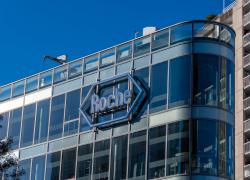
ESMO 2024 – Opdualag comes under fire
Relativity-104 is revealed as a failure, and the phase 3 it just spawned could fail too.
Relativity-104 is revealed as a failure, and the phase 3 it just spawned could fail too.

Serious criticism has been heaped on Bristol Myers Squibb’s decision to take Opdualag into a pivotal lung cancer trial based on the phase 2 Relativity-104 study – by none other than the discussant who reviewed the late-breaking phase 2 data at ESMO on Saturday.
Dr Marina Garassino said Dr Nicolas Girard, Relativity-104’s presenter, had carried out “a series of cherrypicking analyses” after the study’s preplanned subgroups didn't reveal a sufficiently positive result. This post-hoc look suggested PD-L1 1-49% expressers with non-squamous histology as the group to test in phase 3 – but even that shows no difference against a real-world comparator, she said.
Girard, of Institut Curie, made no secret of Relativity-104’s disappointing result overall, in its all-comers population irrespective of histology or PD-L1 status. Here ORR and median PFS for Opdivo plus the anti-Lag3 MAb relatlimab and chemo came in at a respective 51% and 6.7 months, versus 44% and 6.0 months for Opdivo and chemo alone, with neither result convincing statistically.
Beyond melanoma
Opdualag is a fixed-dose combination of Opdivo and relatlimab marketed for melanoma, but after failures in colorectal, gastric and liver cancers doubts have grown about the drug’s ability to penetrate more lucrative indications. This is why first-line NSCLC, the focus of Relativity-104 and the newly begun phase 3 Relativity-1093 study, are so important.
But the failure of Relativity-104 suggests why it’s taken this long for Bristol to reveal its data (results had once been expected in 2022), and accordingly why Relativity-1093, a pivotal study first mooted all the way back at the start of 2021, is only now getting under way. Presumably Bristol has only now found sufficient backing to start Relativity-1093, but the ESMO data cast doubt on such a view.
Relativity-104 included several key prespecified analyses in subgroups for which enrolment was stratified. Most importantly these were PD-L1 expression – at a cut of above and below 1% – and by squamous or non-squamous histology. The problem is that only one of these, PD-L1 positivity, hinted at a benefit on PFS.
But even that wasn’t strong enough, prompting an effort to refine the target group even further, and leading to the non-preplanned cherrypicking, as Garassino, of the National Cancer Institute of Milan, called it. By this process of elimination, passing through the PD-L1 ≥1% subgroup of the non-squamous subgroup, the researchers zeroed in on non-squamous patients expressing PD-L1 at 1-49%.
48 patients
This final non-prespecified subgroup comprised 48 patients – just 16% of Relativity-104’s total intake – but nevertheless it yielded a PFS result that Bristol deemed acceptable. It is on this 0.45 hazard ratio versus Opdivo plus chemo, and 9.8 months of median PFS, that the company is hanging its phase 3 hat.
But Garassino had a final ace up her sleeve. The real-world comparator isn’t the 5.6 months yielded by Opdivo plus chemo in Relativity-104, but rather the nine months or so that Keytruda plus chemo showed in non-squamous PD-L1 1-49% expressers in the Keynote-189 study.
The comparator in Relativity-1093 is Keytruda plus chemo. Even if – and it’s a big if – Bristol manages to repeat the post-hoc success of a small subgroup of Relativity-104 patients in a prospective pivotal trial such a result would, on the available data, be a failure.
How Bristol zeroed in on the population for Relativity-1093
| Relativity-104 result | Opdualag + chemo | Opdivo + chemo | Prespecified subgroup? |
|---|---|---|---|
| PFS in all-comers (n=309) | 6.7mth | 6.0mth | NA |
| HR=0.88 (0.71-1.11) | |||
| PFS in PD-L1 ≥1% (n=150) | 9.8mth | 6.1mth | Yes |
| HR=0.63 (0.45-0.88) | |||
| PFS in non-squamous (n=211) | 8.3mth | 6.0mth | Yes |
| HR=0.86 (0.65-1.13) | |||
| PFS in PD-L1 ≥1% non-squamous (n=98) | 11.6mth | 6.9mth | No |
| HR=0.55 (0.36-0.85) | |||
| PFS in PD-L1 1-49% non-squamous (n=48) | 9.8mth | 5.6mth | No |
| HR=0.45 (0.25-0.81) | |||
Source: ESMO.
3022













